I traveled 2,500 miles to revive a 1958 Jeep FC-170, hoping that I could somehow get the vehicle back on the road. Unfortunately, the Jeep was infested with mice, its carburetor was in desperate need of a rebuild and repair, and the engine itself didn’t even turn over. I opened up the inline-six motor to see what was going on, and let me just say: It wasn’t pretty.
In previous installments of this absurd road trip I’m on — which involves my taking an Amtrak from Detroit to Chicago and then driving a 2002 Lexus LX470 that I’d never seen before to Washington state to pick up a 1958 Willys FC-170 — you read about how I had to wear what was essentially a HAZMAT suit to clean out my old Jeep pickup’s mouse-infested interior. You also read about how I nearly set a garage on fire while rebuilding a carburetor. That was, uh, suboptimal.
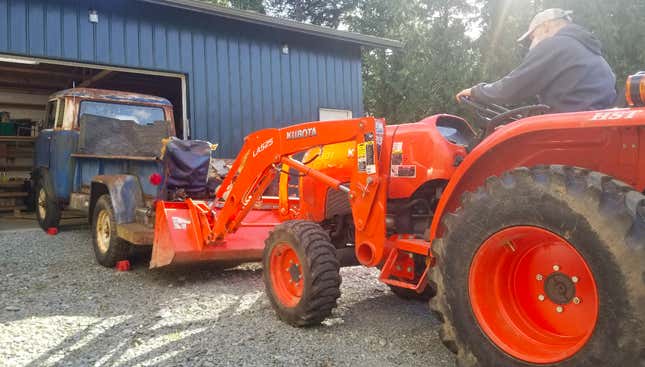
Also suboptimal was the engine’s compression, which I tested after Tom, my host here in Washington, pushed the Willys into the garage using his tractor. And also after I removed the starter, possibly fixed it by accidentally dropping it four feet from a work bench onto a concrete floor, and verified that it worked great when cranked with a 12-volt battery (it’s technically a six-volt starter, but works well on 12).
The four ingredients needed for an engine to run are clean air, good fuel, strong and properly timed spark, and finally, compression. Generally, it’s easy to get the first three ingredients, but the compression bit requires a healthy motor that keeps the air trapped so it can be squished by the piston. Specifically, the rings that seal the space between the piston and the cylinder have to be in good shape and so do the cylinder walls. Otherwise, air will just blow right past the rings and, into the crankcase. The valves, too, need to seal nicely against their seats, or they’ll let air pass by, into the intake and exhaust manifolds.
My compression test, which I ran by threading a rented gauge into the spark plug holes and then cranking the now-working starter motor, revealed readings of between zero and 30 pounds per square inch. If healthy, the engine should make between 125 and 140 p.s.i. Clearly something was wrong, so I had to remove the cylinder head.
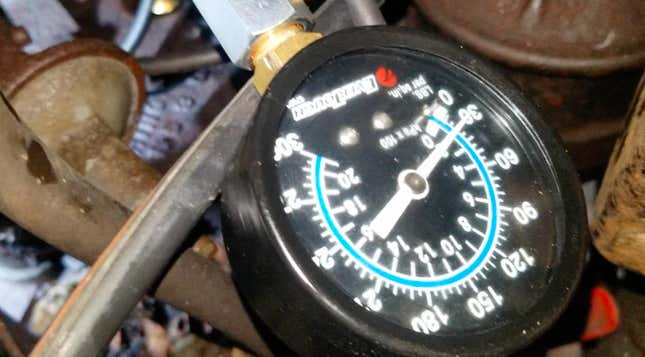
After I spent what felt like an eternity removing the 30+ bolts holding the head to the engine block, my friend and garage-host, Tom, lifted off the head, revealing the cylinders below.
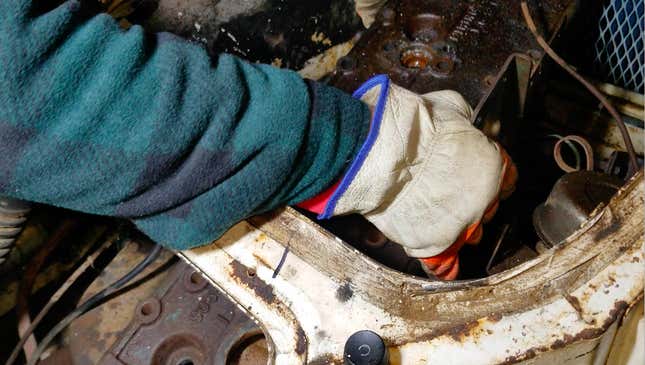
The pistons had plenty of carbon buildup, and there was a tiny bit of rust in a few cylinders, but overall the bores looked good.

Here’s a closer look at one of the cylinder walls. You’ll see that the top half inch of cylinder wall is a different color. That’s because the piston rings don’t ride up that high when the piston reciprocates. Feeling the “ridge” between that dark part of the cylinder wall (that’s carbon giving it the dark color) and the worn-down wall gives an idea of how much life the engine has left in it. Luckily, I found that this motor’s ridge seems fairly minimal, which is no surprise, as I see the “.030" written on top of the pistons, telling me that this engine has been rebuilt.
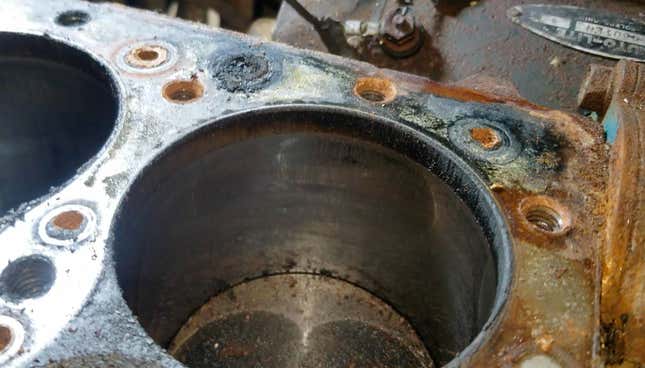
Still, it’s likely this thing was rebuilt 30 years ago, because the motor has some serious, disturbing issues. Namely, the valves. They looked utterly atrocious (that’s red transmission fluid below, in case you’re curious. We’re using it to lubricate the cylinders).
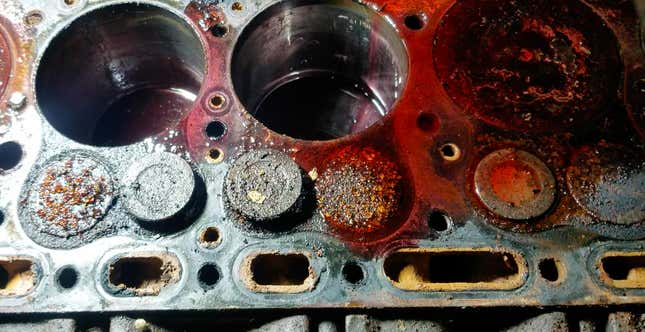
Here’s a look at one of the valves up close:
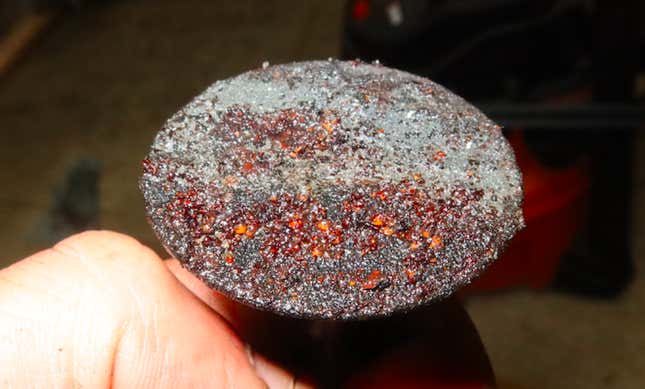
Even after cleaning, some of the valves had deep pitting in them:

Even worse than the valves themselves were the valve seats. How the hell is a valve going to create an airtight seal on this rusty, pitted surface?
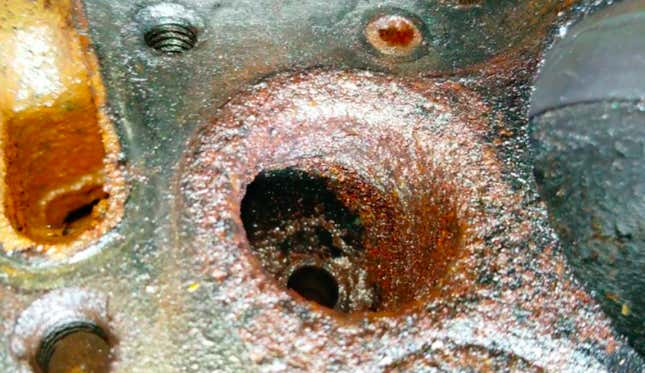
This one may not look as brown, but it looks just as pitted:
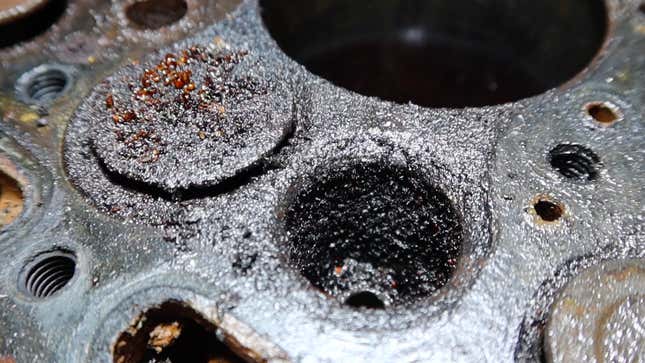
It’s clear that moisture made its way into the engine. I’m lucky it didn’t rust out the cylinders. But these valves! My god, are they horrible. Some of them were even stuck in the up position, explaining why I managed Goose Egg readings on some cylinders during the compression test.
To fix this engine properly will require me to remove the block and send it to a machine shop. Of course, I’m too cheap of a bastard to even consider that, so I have other plans in mind. More to come.